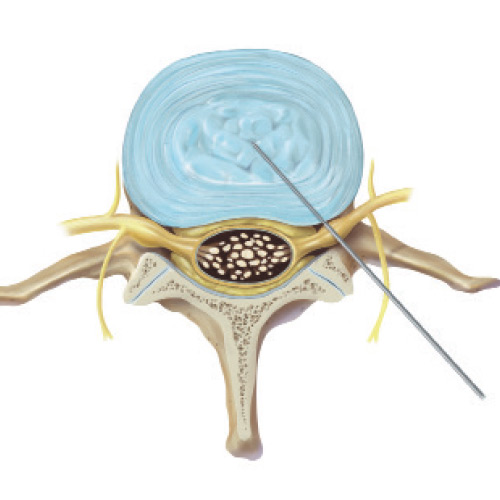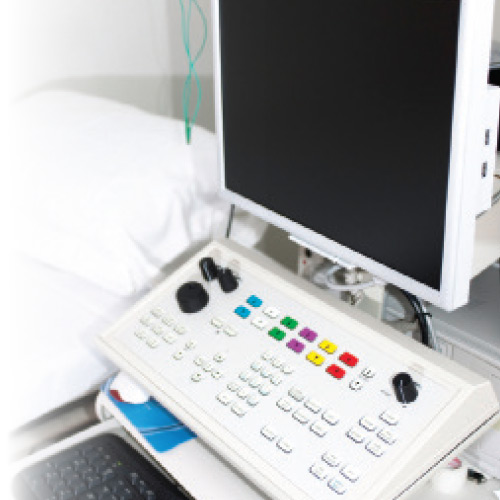Brochures

Acute Low Back Pain
Acute low back pain (LBP) is defined as low back pain present for up to six weeks. It may be experienced as aching, burning, stabbing, sharp or dull, well-defined or vague. The intensity may
range from mild to severe and may fluctuate. The pain may radiate into one or both buttocks or even into the thigh/hip area. The exact source of acute LBP is often difficult to identify however this brochure tells you more about the cause and treatment of LBP.

Back Pain & Emotional Distress
Having an emotional reaction to acute back pain is normal. These reactions can include fear,
anxiety and worry about what the pain means, how long it will last and how much it will interfere with your daily activities. It is important, therefore, to actively manage your pain through physician-guided activities. Our brochure explains how to do that.

Cervical Exercise
If you are suffering from neck pain it is important to stay as active as possible to control and lessen the pain. However this must be done safely to avoid worsening the condition. Learning how to control or eliminate symptoms and subsequently strengthen muscles is possible, and it doesn’t have to be prohibitively expensive either. Download our cervical exercise brochure to learn more.

Discography
In a normal human vertebral disc there are nerves only in the outermost layers of the annulus fibrosis. The layers of the annulus may tear as a result of overloading the spine, or lifting in an awkward position - and these tears can result in pain. If you have back pain, your healthcare provider can determine whether or not your symptoms are disc-related using a diagnostic test called discography. This brochure tells you everything you need to know about the process.

Electrodiagnostic Testing
The term electrodiagnostic testing covers a spectrum of specialized tests, two of which
are the electromyogram and the nerve conduction study. Many problems involving nerves or muscles require electrodiagnostic testing to gain information. Although different tests, the electromyogram and the nerve conduction study combine to give vital information regarding your nerve and muscle function. Download this brochure to find out if they can help you conquer pain.

Exercise: the Backbone of Spine Treatment
Spine experts agree that physical activity is important for people with low back pain. But how do you stay physically active without making your pain worse? Many people are surprised to learn that carefully selected exercises can reduce pain. This brochure shows you how to stay active while controlling your pain, and tells you how proper activity may help protect against recurring back pain.

Herbal Supplements
People take herbs for many reasons, from general health improvement to care of chronic conditions, including back pain. But just because something is natural it doesn’t mean that it’s benefitting you - or even that it’s safe. Like prescription medicine, herbs can have benefits but they can likewise cause unwanted side effects and drug interaction problems. Our brochure tells you how to safely and effectively take herbal supplements.

Herniated Cervical Disc
The spine is a series of connected bones - vertebrae - which protect the spinal cord from damage. Vertebrae connect via two small joints and a cushioning disc made of strong tissues. As we age the disc centers can lose water content, making them less effective. The outer layer may also tear causing this center to displace: a herniated disc. This can press on the nerves and cause pain, numbness or tingling in the shoulders or arms. Our brochure explains in full.

Herniated Lumbar Disc
The spine is a series of connected bones - vertebrae. Discs are cushioning tissues that hold vertebra together. As we age the center of these discs may lose water content making them less effective. This can cause a displacement of the disc center: a herniated disc. Most herniations occur in the lower two discs of the lumbar spine and can press on the spinal nerves causing pain, numbness, tingling or weakness of the leg - sciatica. Our brochure gives you the full story.

Magnetic Resonance Imaging
Magnetic resonance imaging (MRI) is a valuable diagnostic study and a noninvasive, nonradioactive and pain-free method of evaluating the human body. It uses strong magnets and radio waves that are evaluated using computer technology to view three-dimensional images of the body. MRI can help pinpoint the cause of your pain and assist in choosing an appropriate treatment plan. Download our brochure to find out more.

Open Discectomy
Open discectomy is the most common surgical treatment for ruptured or herniated discs of the lumbar spine.Surgery is performed and part of the damaged disc removed. This relieves pressure on the nerve tissue and alleviates pain. Open discectomy has been performed and improved over the course of the past 60 years and is augmented by improved diagnostic tools. Our brochure tells you everything you need to know about open discectomy.

Osteoporosis (Low Bone Mass)
Osteoporosis is the most common bone disease in the United States and other developed countries. It is a disease of low bone mass resulting in deterioration of the structure of bones. This deterioration can weaken your bones so much that you can fracture a bone without suffering major trauma. Even everyday activities such as lifting a bag of groceries or rolling over in bed can result in a fracture. Learn more about osteoporosis by downloading our brochure.

Radiographic Assessment for Back Pain
Radiographic assessments for low back pain involve the use of X-rays to determine the cause of the pain or discomfort. Usually X-rays are ordered by your physician in cases where they suspect congenital defects, degenerative disease, trauma, metastatic cancer or bone deformity as a cause of lower back pain. Find out if you need an X-ray and what it entails with our informative brochure.

Adolescent Idiopathic Scoliosis
Adolescent idiopathic scoliosis (AIS) can present itself as curvature of the thoracic and lumbar spine. There are many causes of scoliosis, but AIS is the most common. It is a diagnosis of exclusion, meaning other diseases or causes have to be ruled out first. AIS is defined as a persistent lateral curvature of the spine of more than 10 degrees in the upright or standing position. Learn more about scoliosis, and its diagnosis and treatment with our brochure.

Spinal Cord Injury
A spinal cord injury is a condition that results from damage or trauma to the nerve tissue of the spine. Normally the spinal cord and cauda equina carry nerve signals between the arms and legs, and the brain, resulting in our ability to move and feel. If the nerve tissue becomes injured, it can occur in a spinal fracture and there may be either total or partial loss of movement (paralysis) or sensation. Download our brochure to find out more about SCI.

Spinal Tumor
Spine tumors may arise from any of the structures of the spine or the spinal column including in the cervical (neck), thoracic (mid-back) or lumbosacral (low back) regions. They can also originate in the spinal cord itself, the spinal roots, the dural sac which surrounds the spinal cord, or the vertebrae. Learn more about the symptoms, the diagnosis and options for treatment with our downloadable brochure.

Adult Isthmic Spondylolisthesis
Approximately 5% of the adult population develop a crack in one of their vertebrae, usually at the point at which the lower part of the spine joins the tailbone. Due to the constant forces the low back experiences this fracture - called a spondylolysis - does not usually heal like a normal bone. It may cause no problem however sometimes a cracked vertebra can slip forward over the vertebra below it, causing pain or numbness. Learn more about AIS in our brochure.

Lumbar Spinal Stenosis
The vertebrae is linked with the intervertebral discs and the facet joints and as we age, these discs become less spongy and less fluid-filled. This can result in reduced disc height and the bulging of the disc into the spinal canal. Arthritis can also cause the bones and ligaments of the joints to thicken and push into the spinal canal. These changes cause a narrowing of the lumbar spinal canal, which is known as spinal stenosis. Our brochure gives you the full picture.

Treatment of Young Athletes with Spine Injuries
Although not common, low back injuries can occur in young athletes and can be a real source of frustration. Most athletic injuries to the back are sprains of the ligaments or strains of the muscles. However, several more serious conditions have symptoms similar to a routine sprain or strain. Our brochure tells you everything you need to know about treating spine injuries in young adults.

Whiplash - Associated Disorders
The term whiplash might be confusing because it describes both a mechanism of injury and the symptoms caused by that injury. The most common symptom of whiplash is neck pain and the most common cause is a motor vehicle accident. In addition to neck pain, there may be pain in one or both arms, between the shoulder blades, the face and even the low back. Our brochure takes a closer look at whiplash.
